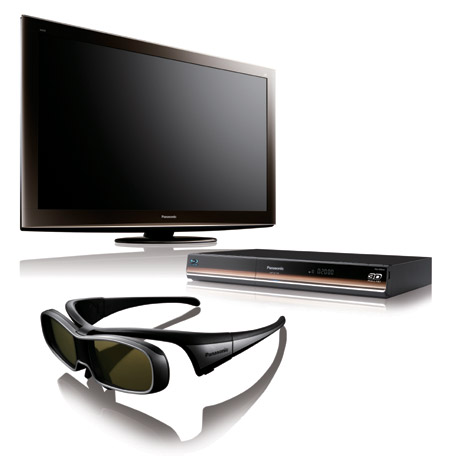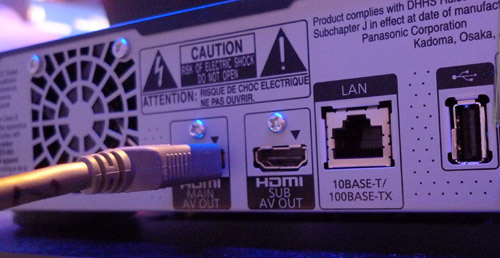At last year's CES, Panasonic promised us a 3D future in full 1080p high definition, demonstrating this technology on a custom-built 103-inch plasma and modified Blu-ray player. At this year's show Panasonic is showing off what consumers will actually be able to buy for their home: a Panasonic Blu-ray 3D Disc Player and 3D-enabled 1080p Plasma HDTVs ranging from 50 inches to 65 inches in size. Panasonic is calling their 3D solution Full HD 3D for its ability to do full resolution 1080p High definition to each high for the best possible results. The technology relies on active shutter glasses to alternate images between left and right eyes, which the brain then combines into a single three dimensional image.
With 3-D clips from Avatar, the Olympics, football games and other 3D content, CES attendees could get a real feeling for what 3DTV will look like in their living rooms and home theaters by stopping by the Panasonic booth in the Las Vegas Convention Center. With the specifications for the Blu-ray 3D Disc format finalized just last month, it must have taken some pretty nimble manufacturing to get both the players and compatible TVs finished in time for the show. But unlike most other vendors who talked about 3-D in general terms or had prototype models on display, Panasonic backed up their claims with fully functional players and televisions on display for all to see.
Panasonic also jointly announced with DIRECTV that the satellite provider would be launching three 3-D channels this Summer which would work with customers' existing set top boxes by providing software upgrades and an output adapter that would be compatible with Panasonic 3-D HDTVs. More details were not available on the technical details of DIRECTV's 3D solution at press time.

As for the TVs themselves, for 2010 the 3-D feature is being added to Panasonic's high-end V Series line of Full HD 1080p plasma displays (now designated "VT" with the T being for Three-D). 3-D capability will be rolled out to other lines over time, but most likely not this year. 3-D models include support for the new HDMI 1.4 specification so they can accept a 24p (24 frames/second) signal that is approximately twice the bandwidth of 1080p/24. This allows the Blu-ray players and other future source components to deliver a full 1080p (1920x1080 pixels progressive) signal to each eye for highest picture quality and no loss of detail. One pair of 3D eyewear is included with each TV with more to be available at retail.
3DTV Models Announced and On Display at CES included:

The first 3-D enabled Blu-ray player is Panasonic's DMP-BDT350, which also offers an enhanced version of VIERA Cast that can stream content from Netflix and Pandora in addition to YouTube, Picasa, Amazon Video on Demand and other services available on the VIERA Cast platform last year. As a high-end model, the BDT350 also includes 7.1 channel analog outputs for full compatibility with the widest range of home theater gear. For HDMI outputs, you'll find two of those: one HDMI 1.4 output for exploiting 3D on the new 3DTV models and one HDMI 1.3 output for compatibility with current HDMI audio-decoding receivers and preamp/processors.

Pricing and availability details have not yet been announced for the players or televisions but product is expected in the second quarter of 2010 ("April or May" was the answer given by Panasonic reps).
More CES 2010 Coverage Live from Las Vegas: